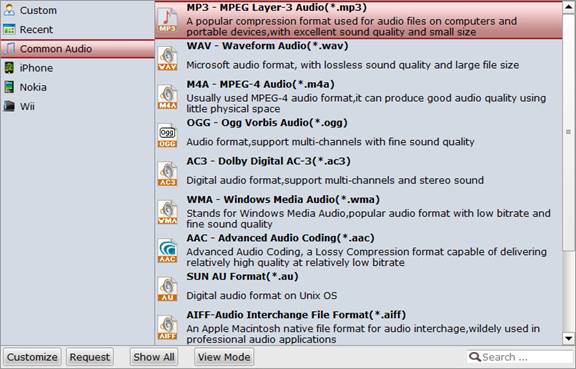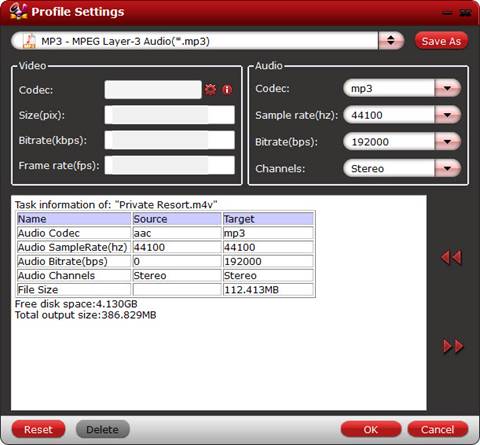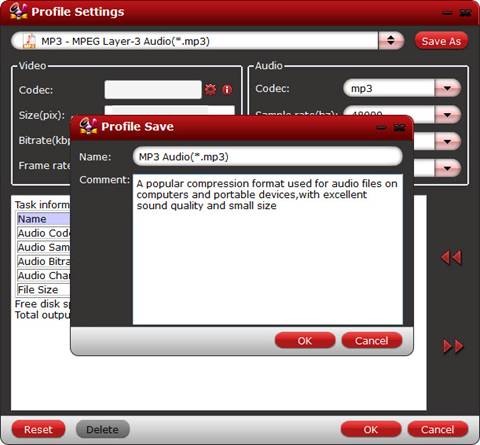The software saves converted audio files to default path if you don’t specify an output folder. Click “Browse” button to specify output location where you’d like to export audio files to.

Use a preset format
Click “Format” bar to select output file format. Pavtube ChewTune Audio exports audio files only, so there are not video formats like in Pavtube ChewTune. Select a desired audio format from the list, and then you can step into the conversion process.

If you don’t want to see so many formats in profile list, click “Customize” to hide templates that are rarely used.
Use custom format
When/If the preset formats do not meet you needs, you can customize a format by yourself. Simply select a format and click “Settings”.

Pavtube ChewTune Audio exports audio files only, so the video codec, size, bitrate and frame rate are not adjustable. You can set audio codec, sample rate, bitrate and channels to control the output audio quality.
- Audio codec is used to compress the audio contents.
- Audio Sample rate defines the number of samples per unit of time (usually seconds) taken from a continuous signal to make a discrete signal. In digital audio the most common sampling rates are 44.1 kHz, 48 kHz, and 96 kHz.
- Audio Bitrate refers to the data transfer rate of audio contents.
- Audio Channels refers to the passages for audio streams to pass-through. A stereo audio has two independent channels, one left and one right while mono has one channel only. A 5.1 system provides front left, center and right, surround left and right and subwoofer. When listen to music from earphone or handset, stereo audio is just fine.
Save As: click to save your settings as a new format. The next time you run ChewTune Audio, you can
click the format bar and find the format in "Custom" group.

Reset: click to restore default settings.

 Home
Home





